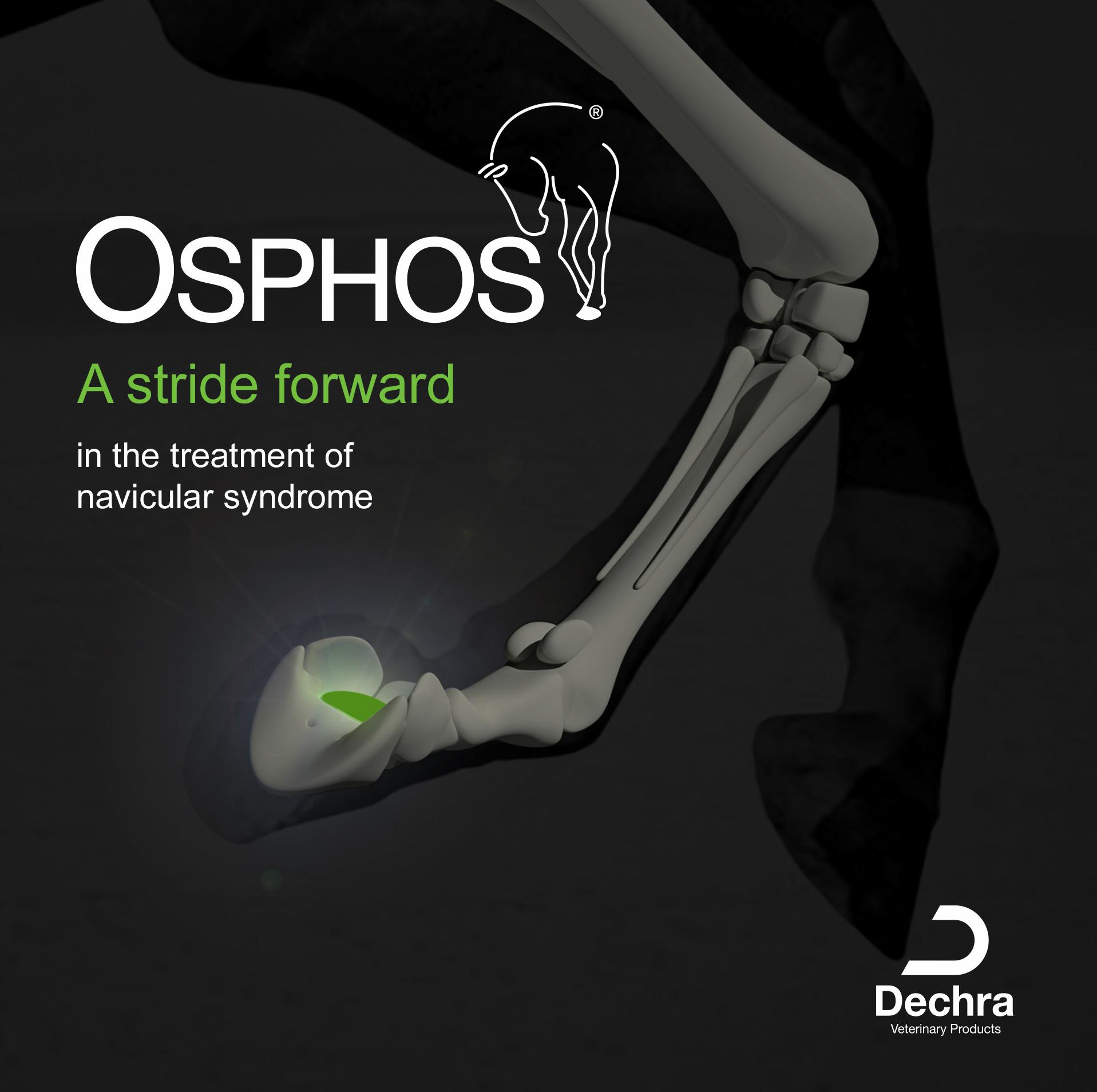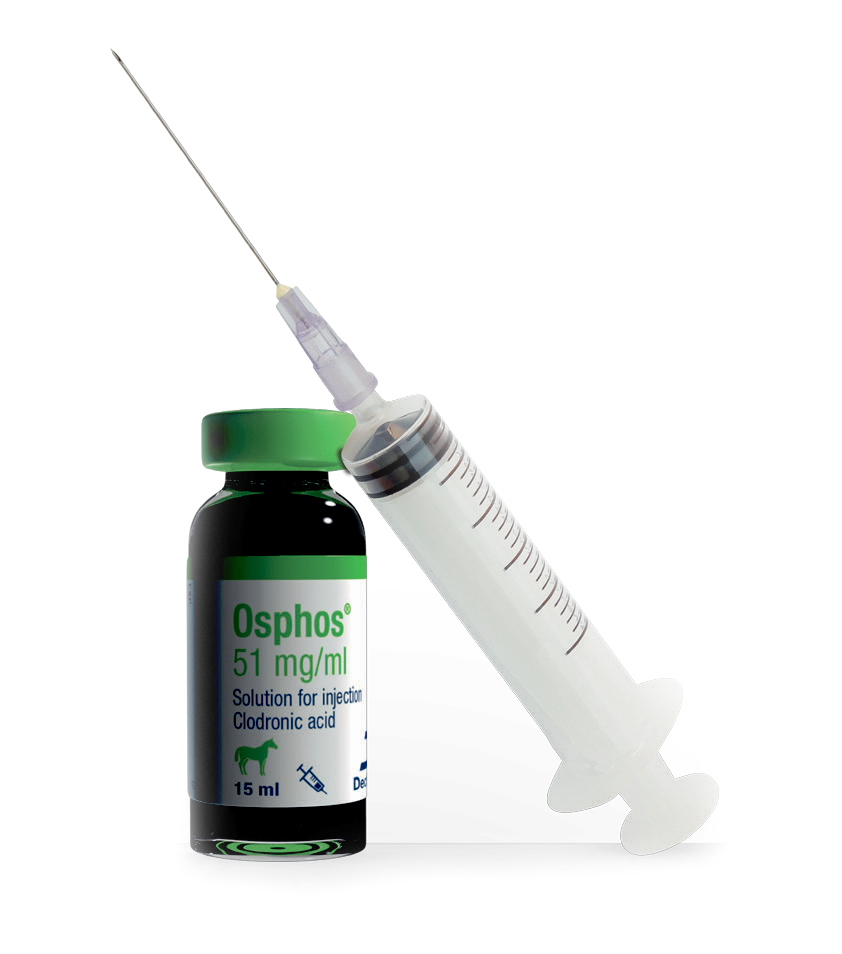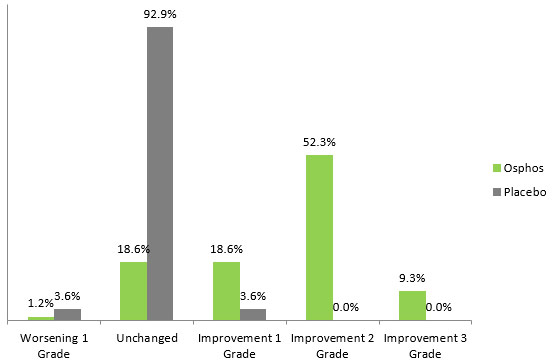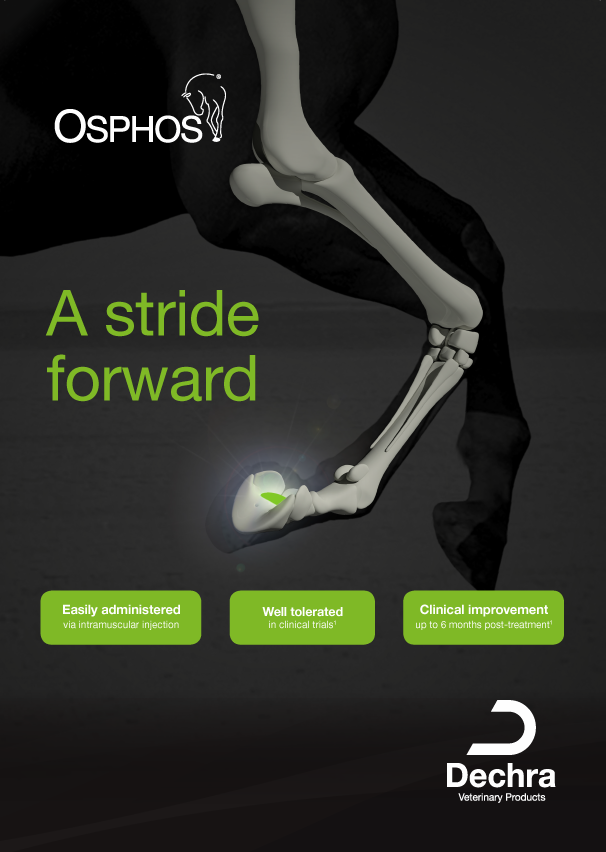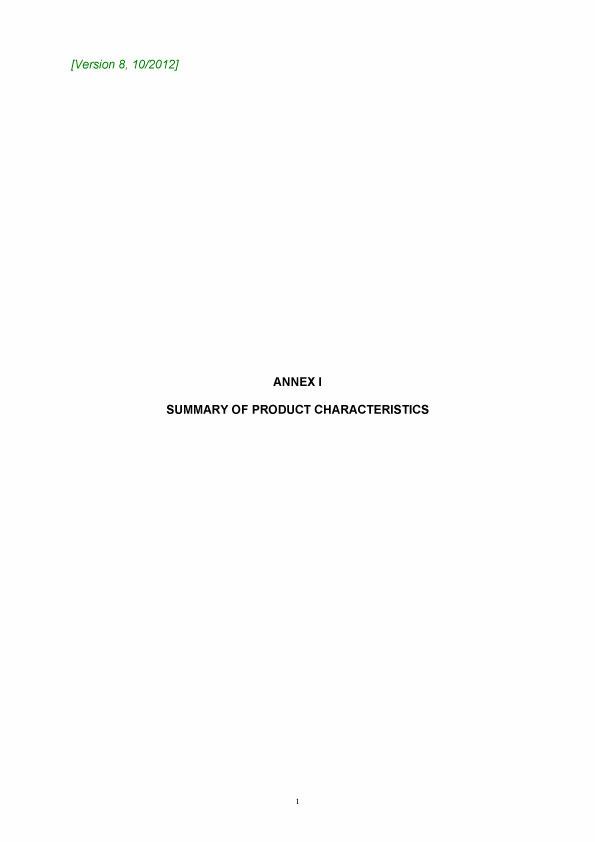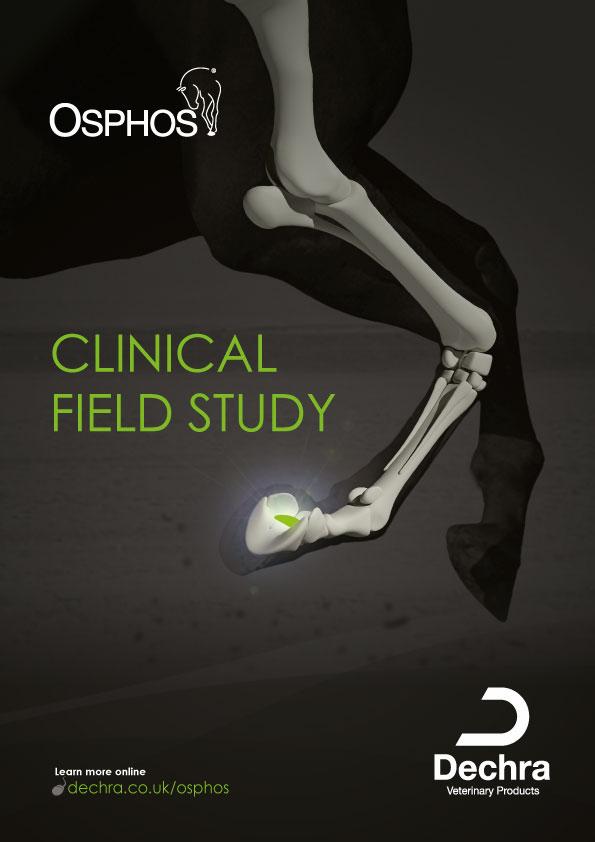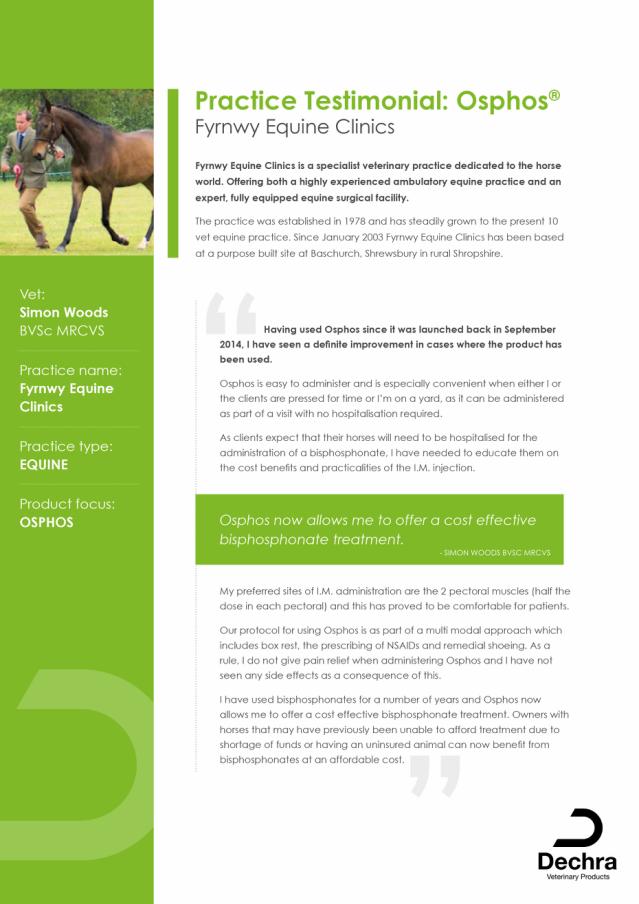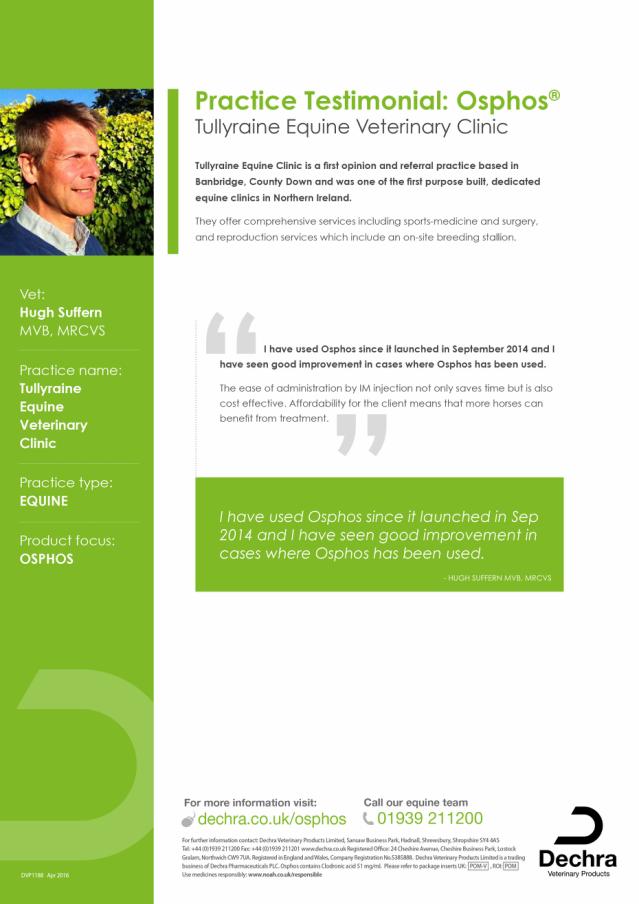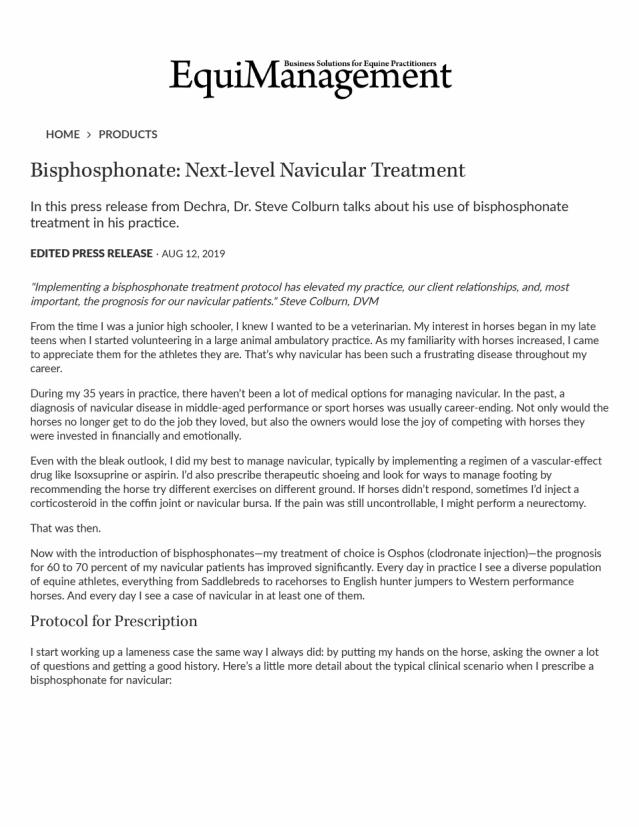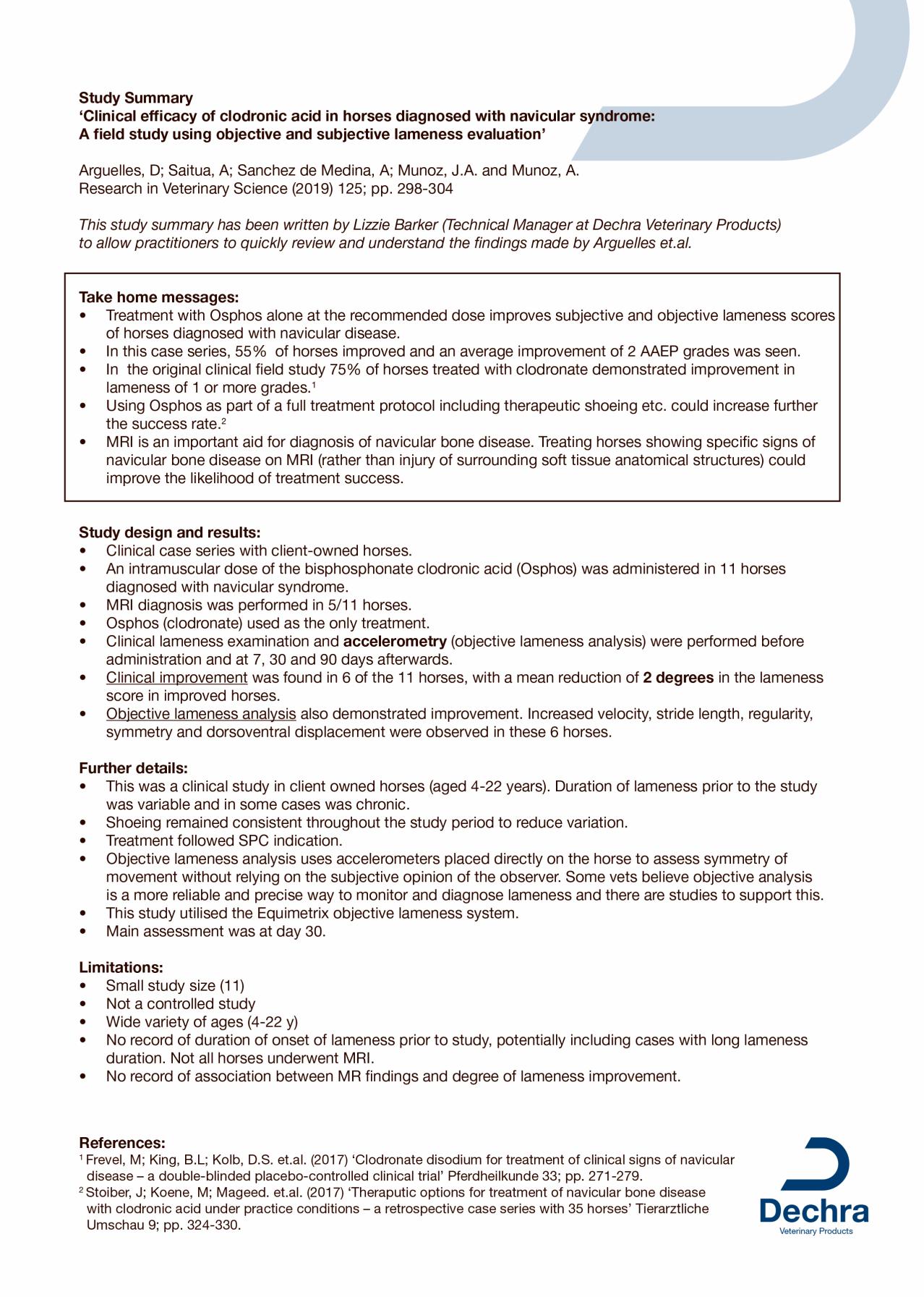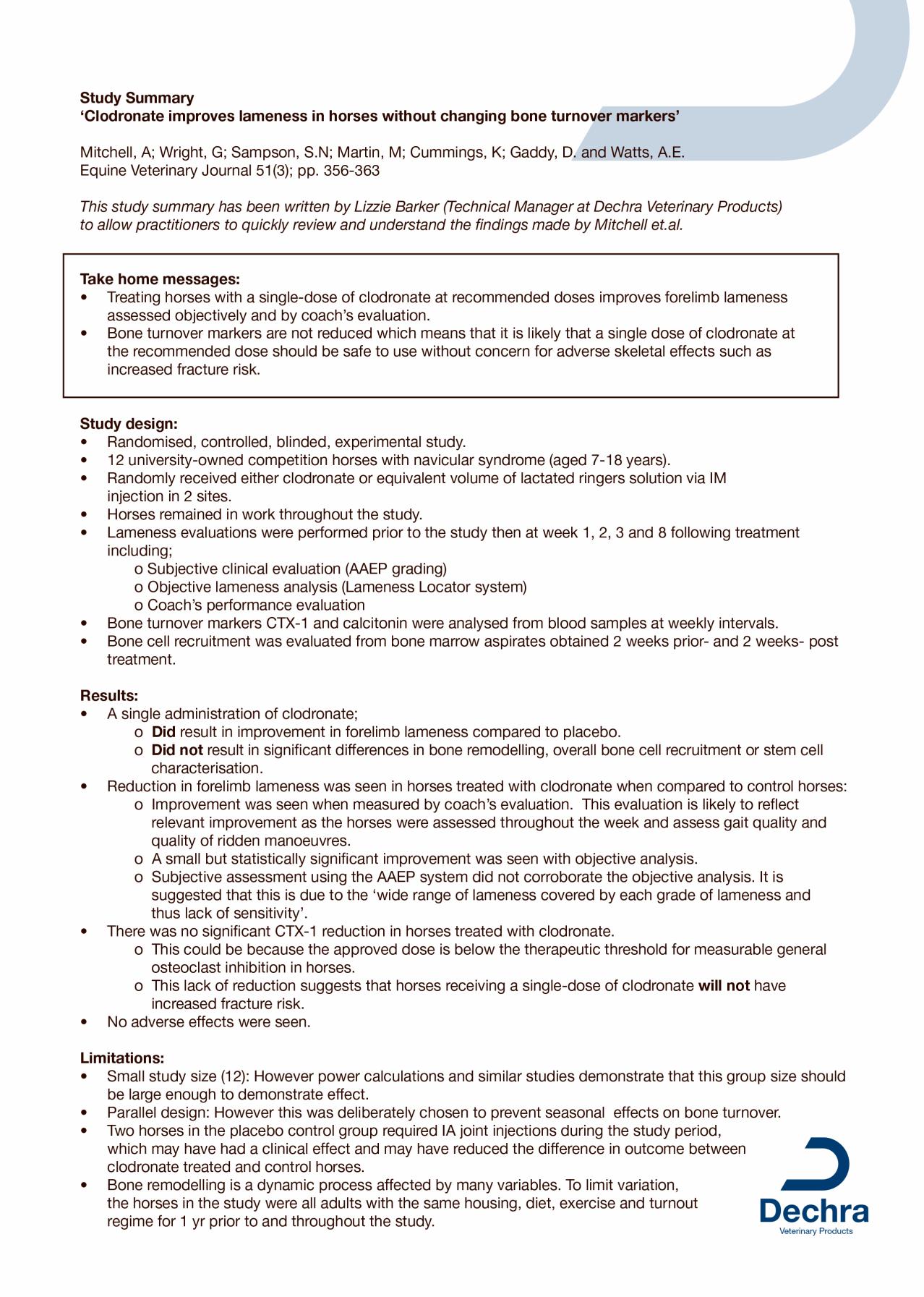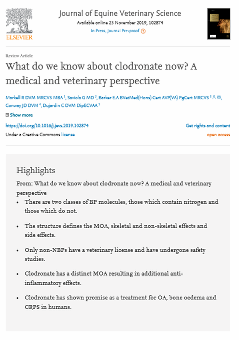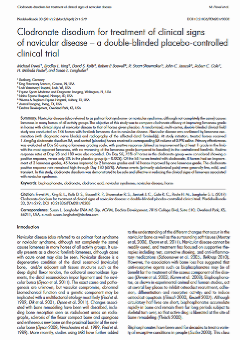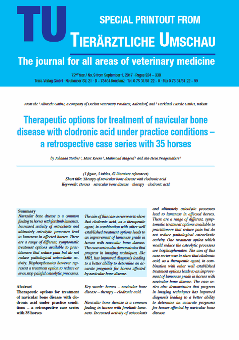Osphos is easily administered via intramuscular injection.
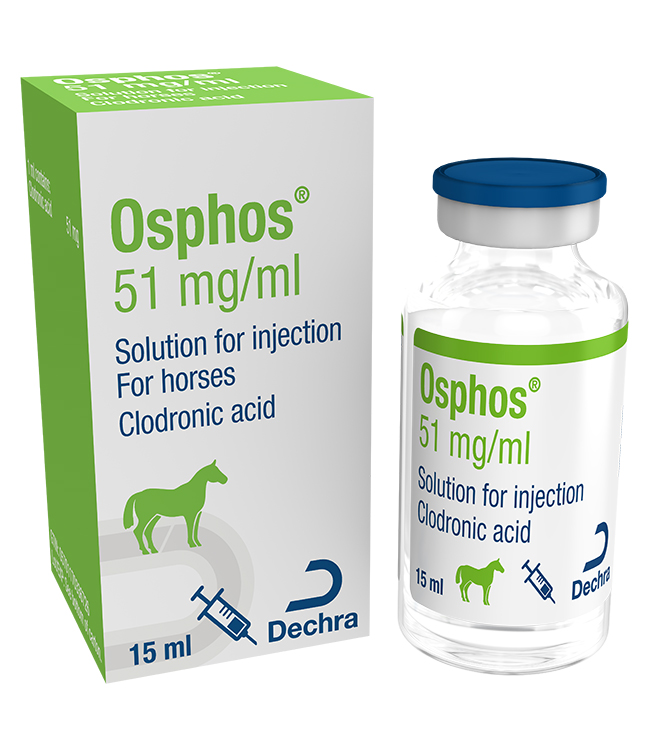
- The total injection volume should be divided between 2 - 3 injection sites.
- Suitable sites for injection:
- Centre of the lower neck
- Pectoral muscles
- Gluteal muscles
- No need for repeated IV injection or for IV catheterisation, reduces risk of thrombophlebitis and makes treatment quick and easy.
Osphos solution for injection is presented in a 15 ml vial, sufficient to treat one horse.
Recommended dosage: 3 ml per 100 kg of bodyweight, with a maximum of 15 ml per horse.

